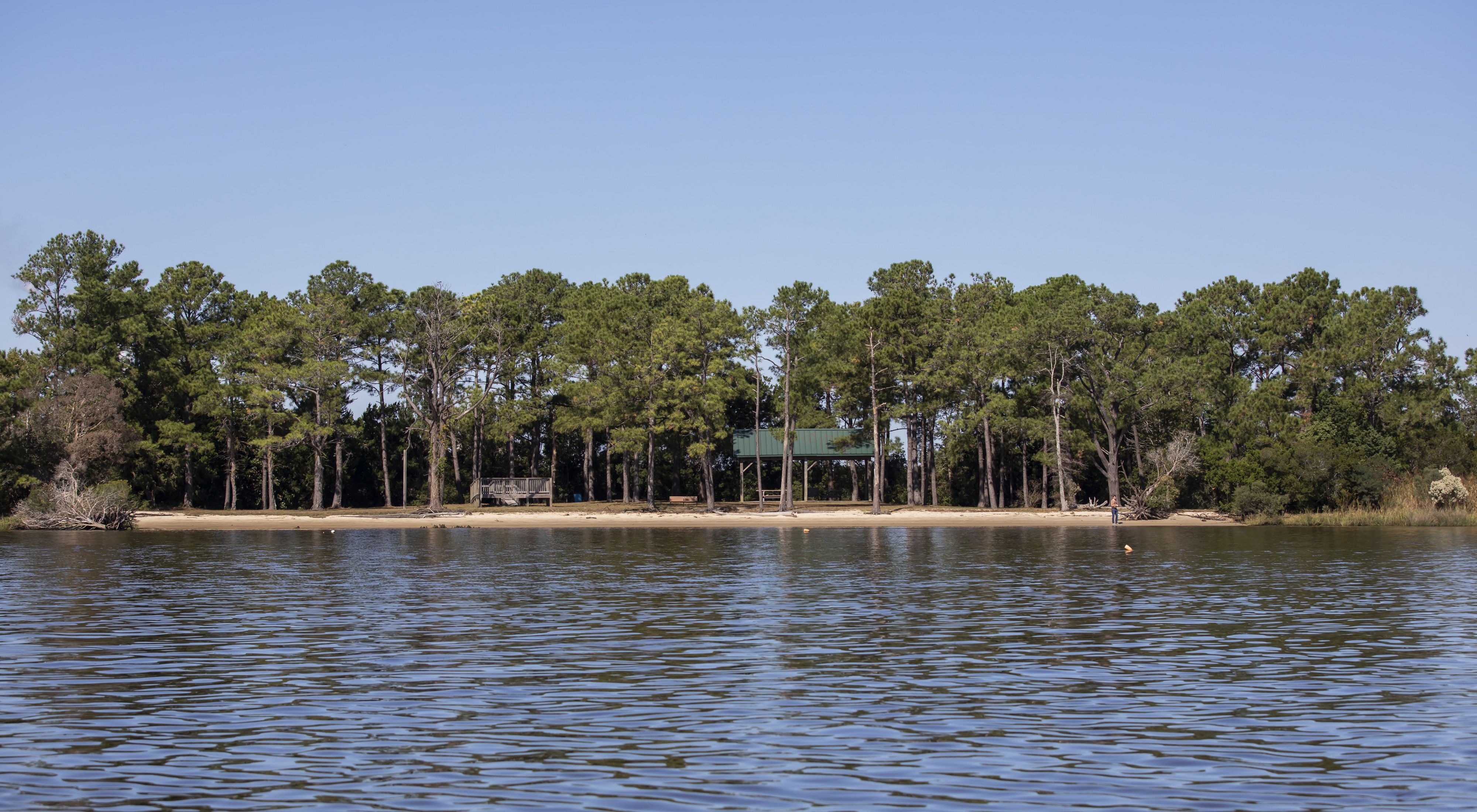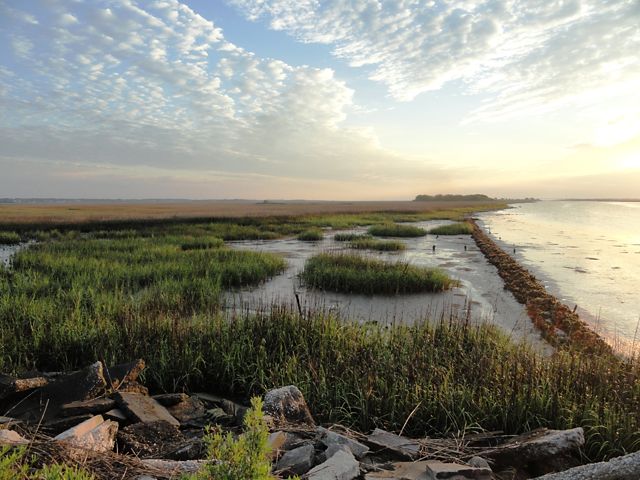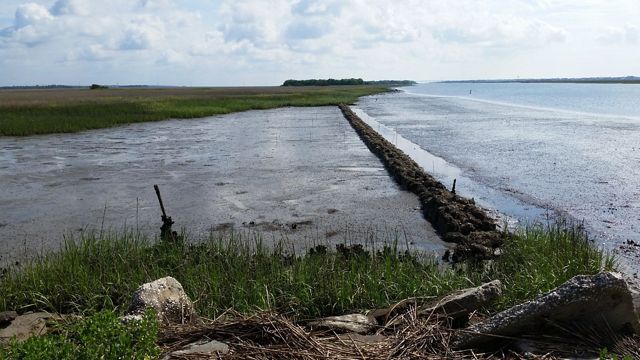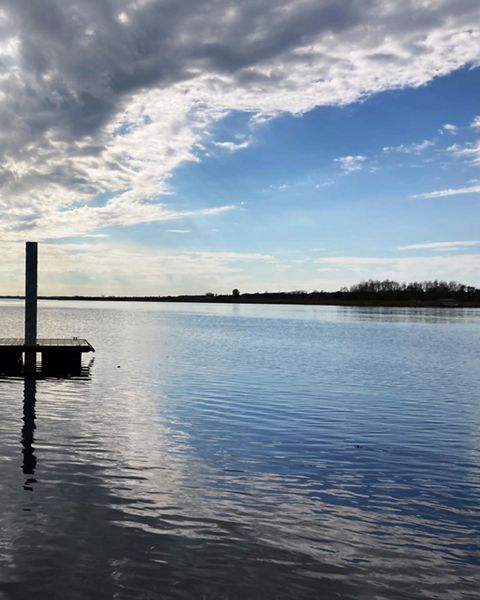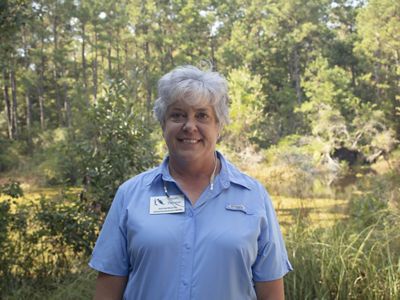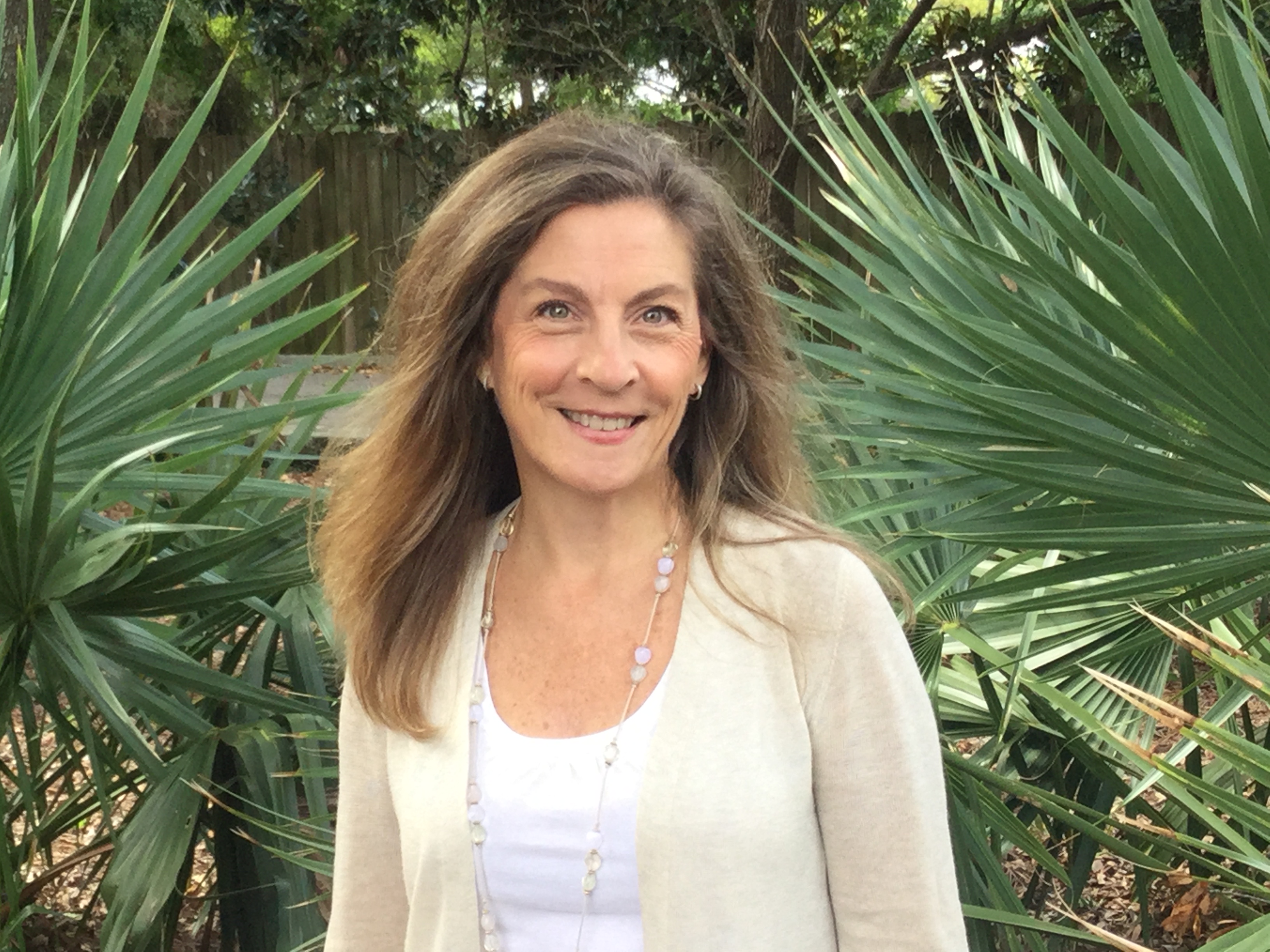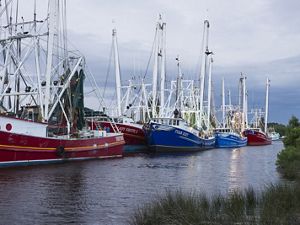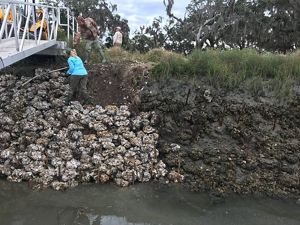Building a Shoreline
The Boyd Living Shoreline in Georgetown will help reduce erosion at Morgan Park while creating new habitat for crabs, oysters and shrimp.
Our South Carolina shorelines are alive with swaying marsh grasses, water-filtering oysters and darting shrimp. But did you know that the same natural features that give us great fishing and afternoons near the water can also stabilize our shore from erosion?
The future Boyd Living Shoreline will enhance Morgan Park in Georgetown, South Carolina by helping to control erosion and providing habitat for crab, shrimp, oysters and fish. Find out more about the project below!

Project Timeline
2021
- Launch project. (DONE)
- Hire contractors for design and monitoring. (DONE)
- Submit permits. (DONE)
2022-2023
- Coastal Carolina University conducts baseline monitoring. (IN PROGRESS)
- DHEC living shoreline permit approved (DONE)
- USACE in-water permit approved (DONE)
2024
- Constructon begins. (DONE)
- Complete construction.
- Coastal Carolina University conducts post-installation monitoring.
Why a Living Shoreline?
Boat wakes and high tides are eroding Morgan Park. Left alone, sand will wash away until the park barely remains. A living shoreline can help reverse the process.
In addition to reducing or reversing erosion by trapping sediment, living shorelines have amazing added benefits:
Keep Water Clean - One grown oyster can filter up to 50 gallons of water per day. Imagine how many gallons a whole reef can clean!
Provide Wildlife Habitat (shrimp, crab, fish, shorebirds) - You'll notice that the best fishing is around healthy oyster reefs and marshes.
Absorb Wave Energy – Sea walls don’t absorb energy, they redirect it. That means building a sea wall here could worsen erosion in another area nearby. Living shorelines, in contrast, absorb wave energy, slowing down over natural materials, oyster shells and marsh grasses.
Building a living shoreline at Morgan Park will give the shoreline a chance to heal itself, while also helping local water quality and wildlife.

What Will the Living Shoreline Look Like?
You’ll be able to see many parts of the Boyd Living Shoreline, especially at low tide. It is made up of three parts:
Wattle Fence Sills: Closest to shore and visible at low tide are the wattle fence sills. These wooden bundles were built by local volunteers, using wood from the nearby Baruch Institute. They help trap sediment near the shoreline so marsh grasses can grow.
Manufactured Wire Reefs: These wire cages provide an ideal habitat for baby oysters – called spat – to settle and begin growing into reefs. Healthy oyster reefs help clean the water and provide critical habitat for baby fish and crabs.
Wooden Breakwater: The poles you see offshore help reduce wave energy and erosion. They will slow the forces eroding Morgan Park and also protect the other parts of the shoreline as it becomes established.
What Comes Next?
As the shoreline heals itself, you should see more grasses, shorebirds, fish and wildlife, and less bare sand. The grasses hold sediment in place and also help keep our water clean!

The Big Picture
The Nature Conservancy's efforts at Morgan Park build on achievements at places like Goldbug Island, where TNC and several partners installed a living shoreline near Charleston. The project demonstrates the value and effectiveness of nature-based solutions for restoring areas of marsh that were experiencing significant erosion.
Goldbug Island: A Case Study in Success
The reef at Goldbug Island was designed to ensure that materials were elevated out of the mud to promote optimal oyster growth and attenuate wave energy. Due to the soft nature of the sediment, the base of the reef is made of wooden pallets, which support a layer of Oyster Castles™ and a layer of bagged oyster shell.
Today, Goldbug Island's living shoreline—at 225' long, 4' wide, and 1.5' high—remains the longest reef installed by TNC to date. TNC's staff and partners in South Carolina continue to monitor oyster growth, vegetation growth and sediment accretion annually.
Build Your Own Living Shoreline
We’re excited to share the good news that private property owners now can apply for a permit to protect their property by building their own living shoreline! This new permit process is the culmination of more than a decade of pilot installations (including Goldbug Island) and monitoring, led by the South Carolina Department of Health and Environmental Control (DHEC), South Carolina Department of Natural Resources (DNR), TNC and other partners.
So, where do you start?
Ultimately, you’ll want to contact DHEC for all living shoreline permit conversations. Before reaching out, though, here are some resources to help you decide if a living shoreline is the right choice to protect your property:
- DHEC’s Living Shorelines describes the permit development, research completed and regulatory definitions.
- Clemson Extension offers additional information regarding costs, how to select an installation method and how to measure success, as well as training and educational opportunities.
- TNC’s Living Shoreline Explorer Application provides a preliminary look at specific site conditions that are important to consider (energy levels, shoreline change and harvest areas).
Contact Blair Williams, Critical Area Permitting Section Manager, to request a pre-application meeting with DHEC OCRM.
We know that any new permit process can seem daunting, and we’re here to help. Reach out to Elizabeth Fly at TNC at any time with questions about evaluating or developing your own living shoreline project.

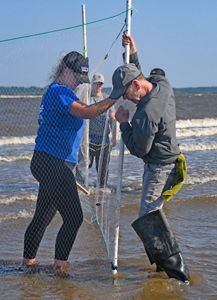

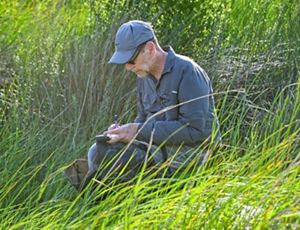
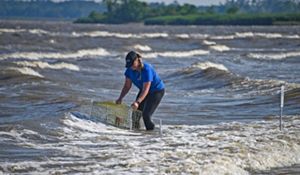
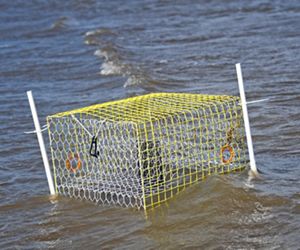
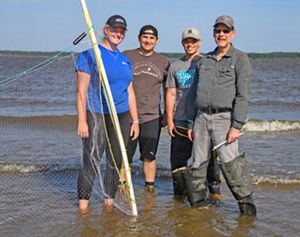

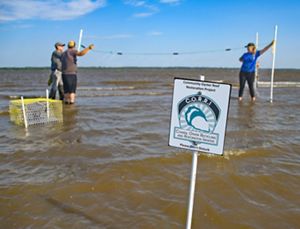


Drone Monitoring: Professor Paul Gayes from Coastal Carolina University and his students used a LIDAR drone to photograph the shoreline of Morgan Park and the East Bay/Morgan peninsula. © The Nature Conservancy/Joy Brown

Boyd Living Shoreline: Marine science students from Coastal Carolina University collect baseline data at the East Bay and Morgan Park sites. © Tanya Ackerman

Drone Monitoring: Professor Paul Gayes from Coastal Carolina University and his students used a LIDAR drone to photograph the shoreline of Morgan Park and the East Bay/Morgan peninsula. © The Nature Conservancy/Joy Brown

Boyd Living Shoreline: Marine science students from Coastal Carolina University collect baseline data at the East Bay and Morgan Park sites. © Tanya Ackerman

Boyd Living Shoreline: Marine science students from Coastal Carolina University collect baseline data at the East Bay and Morgan Park sites. © Tanya Ackerman

Boyd Living Shoreline: Marine science students from Coastal Carolina University collect baseline data at the East Bay and Morgan Park sites. © Tanya Ackerman

Boyd Living Shoreline: Marine science students from Coastal Carolina University collect baseline data at the East Bay and Morgan Park sites. © Tanya Ackerman

Drone Monitoring: Professor Paul Gayes from Coastal Carolina University and his students used a LIDAR drone to photograph the shoreline of Morgan Park and the East Bay/Morgan peninsula. © The Nature Conservancy/Joy Brown

Boyd Living Shoreline: Marine science students from Coastal Carolina University collect baseline data at the East Bay and Morgan Park sites. © Tanya Ackerman

Drone Monitoring: Professor Paul Gayes from Coastal Carolina University and his students used a LIDAR drone to photograph the shoreline of Morgan Park and the East Bay/Morgan peninsula. © The Nature Conservancy/Joy Brown
This is your shoreline. Morgan Park is your park.
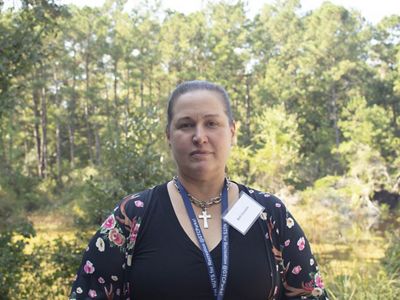
“I’m honored to be a community ambassador for this project. Applying nature-based solutions to coastal challenges in our area is exciting. I love the idea that this project is focused on helping our land heal itself."
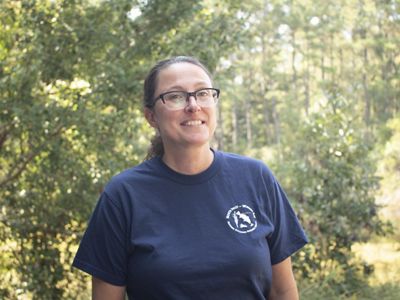
“I’m excited for the idea of this project bringing attention to Georgetown. We’re trying to build nature-based tourism here and almost rebranding Georgetown as an epicenter of people and nature.”
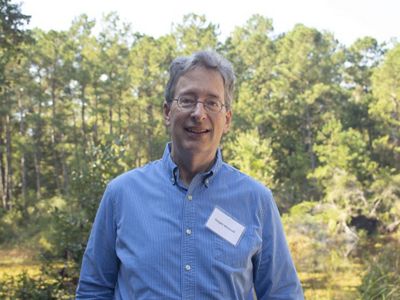
“I like the multi-layered approach of this project. This way of rebuilding the shoreline is similar to how the Native Americans interacted with their environment, protecting it and using it for aquaculture."
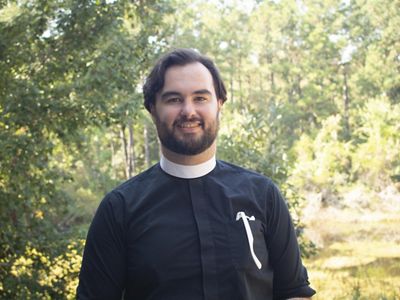
“This is a great opportunity for Georgetown residents to learn and engage in the process of nature healing itself.”
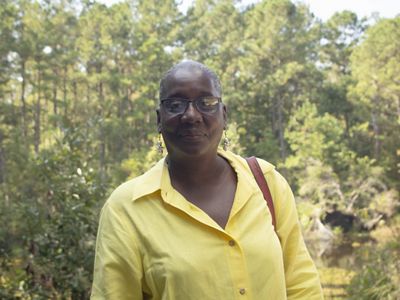
“I keep seeing in my mind, curriculum for local kids. Starting in middle school, this could be a living classroom so our young people can learn about the environment and living shorelines.”
Wattle Fencing
Staff from the Shoreline Restoration Group and TNC guided community volunteers in rebuilding the shoreline at East Bay Park. Volunteers assembled 63 bundles of branches collected from the Baruch Institute. Then they tied bundles into x-shaped structures to place in shallow water at Morgan Park to trap sediment and restore the eroding shoreline.
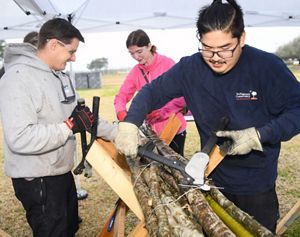
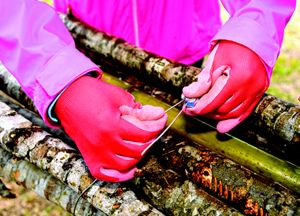
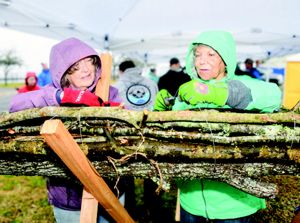
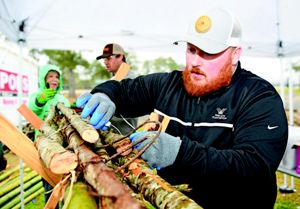
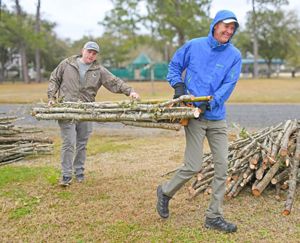





Manufactured Wire Reefs
Under the direction of Pastor Perry Funnie, the carpentry director at Carvers Bay Early College and Career High School in Hemingway, students built 104 manufactured wire reefs to be used in the Boyd Living Shoreline. The used more than two cubic yards of oyster shell, 3,600 square feet of wire and 100 pounds of coconut coir fiber for the project.
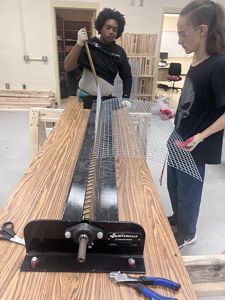
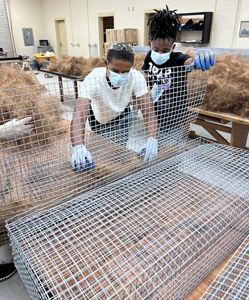
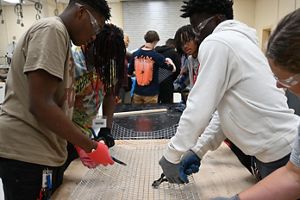
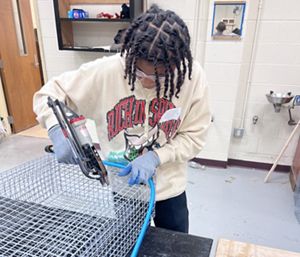
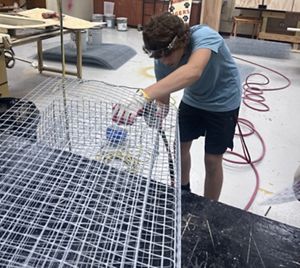


Manufactured Wire Reefs: Carpentry students from Carvers Bay Early College and Career High School in South Carolina built 104 manufactured wire reefs to be used in The Nature Conservancy's Boyd Living © Perry Funnie

Manufactured Wire Reefs: Carpentry students from Carvers Bay Early College and Career High School in South Carolina built 104 manufactured wire reefs to be used in The Nature Conservancy's Boyd Living © Jenn Meyers

Manufactured Wire Reefs: Carpentry students from Carvers Bay Early College and Career High School in South Carolina built 104 manufactured wire reefs to be used in The Nature Conservancy's Boyd Living © Perry Funnie


A Transformational Gift
In December 2020, the Darnall W. and Susan F. Boyd Foundation announced a $997,000 gift to The Nature Conservancy to construct a one-acre living shoreline at East Bay and Morgan parks in Georgetown. It’s the Foundation’s first gift outside of the Columbia area.
“We’re very interested in lots of nature things," says Columbia icon Susan Boyd of her family’s foundation. “This [project] sounded really interesting to Donny. He loves oysters and he could see them disappearing.”
“Donny” is Susan’s late husband, Darnall, who created the foundation that bears his and Susan’s names.


Columbia, where the Foundation is based, has benefited from a complete reinvention of Boyd Plaza, upgrades to historic homes and gardens and creation of the Sanctuary at Boyd Island, off the Saluda Riverwalk, among other projects.
“We are people who love the outdoors, hunting and traveling,” adds Susan. “The longer we were able to do that, the more things we saw being lost. It encouraged us to do something about it.”
This new project fulfills that desire. Living shorelines play a key role in reducing erosion, as sea walls do, but are constructed from marsh grasses and oyster reefs that also welcome wildlife.
“The Foundation focuses on outdoor recreation, education and beauty, as well as improving wildlife habitat,” says George Bailey, the Foundation’s president. “It’s our objective to improve the quality of life for people in the Midlands and create an incredible legacy for the Boyd family.”
“I love this project, and I think it’s very worthwhile to save part of the world,” adds Susan. “And so I’m glad we’re doing it.”
Support This Work
Want to learn more about living shorelines?
-

Learn More
Contact TNC's South Carolina director of resilience and ocean conservation, Elizabeth Fly, to learn more about the program, including how to get regular updates. Contact Elizabeth Fly
-
Support Our Work
Contact TNC's South Carolina director of philanthropy, Elizabeth Foster, to contribute to projects in South Carolina. Contact Elizabeth Foster
